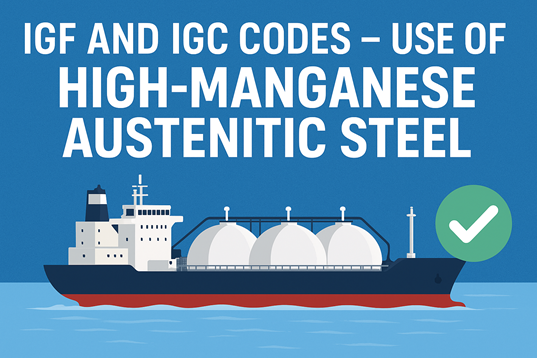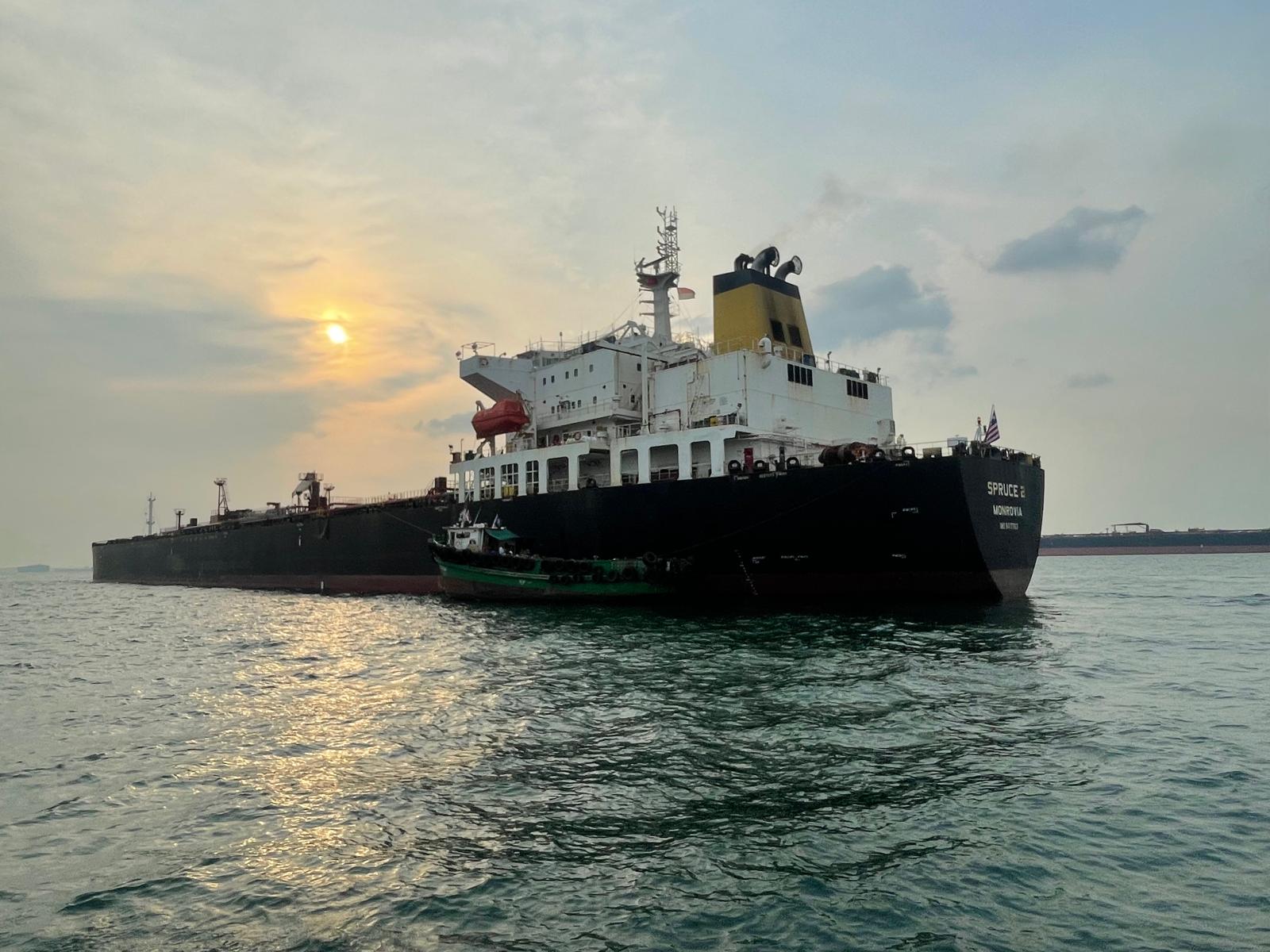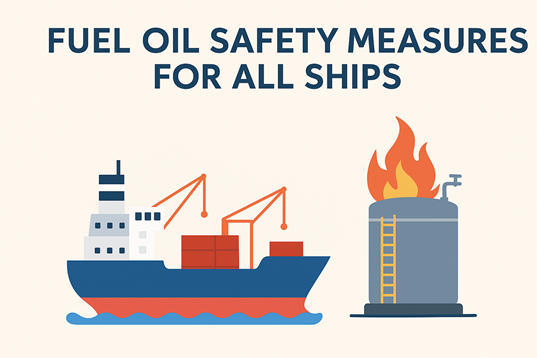
REGULATIONS FOR THE CONTROL OF POLLUTION BY NOXIOUS LIQUID SUBSTANCES
Chemical tanker : Means a ship constructed or adapted primarily to carry a cargo of liquid product in bulk listed in Chapter 17 of the IBC code .
NLS Tanker: Means a ship constructed or adapted primarily to carry NLS in bulk and includes oil tanker as defined in annex 1 of Marpol when carrying a cargo or part cargo of NLS (indicated in CH 17 or 18 of the IBC code)
Clean ballast : Means ballast water carried in a tank which, after it was last used to carry a cargo containing a substance in category X, Y, Z has been thoroughly cleaned and the residues resulting there- from have been discharged and the tank emptied in accordance with this annex.
Segregated ballast : Means ballast water introduced into a tank permanently allocated to the carriage of ballast or the carriage of ballast or cargoes other than oil or noxious liquid substances as variously defined in the annexes of the present convention, and which is completely separated from the cargo and oil fuel system.
Liquid substance: Are those having a vapour pressure not exceeding 2.8 kg/cm2 absolute at a temperature of 37.8 c.
Noxious liquid Substance : Means any substance indicated in the pollution category column of Chapter 17 or 18 of IBC or provisionally assessed under regulation 6.3 as falling in category X.Y.Z.(substances with a hazard are listed in chapter 17 and substances without a hazard are listed in chapter 18)
International Bulk Chemical Code : Means the international code for the construction and equipments of Ships carrying dangerous chemicals in bulk.
Bulk Chemical code : Means the code for the construction and equipments of ships carrying dangerous Chemicals in Bulk.
Enroute : Means a ship is underway at sea and is steering such courses that will enable the discharge to be spread over large sea area.
PREWASH: this is the primary stage of tank washing to remove the residues so that high standards with respect to tank washing can be achieved. Tank washings collected after prewash is to be discharged to reception facility ashore. This will reduce pollution as the tank is ballasted after the concentration of NLS is reduced
VENT PROCEDURES: listed in appendix 7/annex 2 contains specific requirements for the use of cargo tanks ventilation system for that particular ship and amongst other items (safety procedures/Enclosed space precautions as per IBC/ISGOTT) includes:
– vent positions to be used
– minimum flow/speed of fan
– procedure for ventilation of cargo, pipelines, pumps, filters
– procedure for ensuring tanks are dry upon completion
NOTE: any water subsequently introduced after ventilation shall be regarded as clean water and will NOT subject to the discharge requirement criteria of annex 2
CERT OF FITNESS: A cert issued by administration for the carriage of dangerous chemicals in bulk after initial survey/periodic survey to a chemical tanker engaged in International Trade and complying with IBC
Explanation of Annex II :
Annex II applies to the carriage in bulk of all liquid substance except oil (as defined in Annex 1 to the Convention). Annex II is implemented through the international Code for the construction and Equipment of ships carrying Dangerous Chemicals in bulk (IBC Code) (ships built after 1986) and the code for the construction and equipment of ships carrying Dangerous Chemicals in Bulk (BCH code) (older ships).
Substances posing a threat of harm to the marine environment are divided into four categories. Category X,Y,Z substances with a hazard are listed as such in chapter 17 of the IBC code, whilst other substance(OS) without a hazard and substance not posing a threat to the marine environment are listed as such in chapter 18 of the IBC Code. Category X substances are those posing the greatest threat to the marine environment, whilst category Z substances are those posing the least threat. Other substances (OS) are not subject to any requirement of this annex.
Annex II requires that every ship is provided with pumping and piping arrangements to ensure that each tank designated for the carriage of category X,Y,Z substances does not retain, after unloading, a quantity of residue in excess of the requirements. A performance test should be carried out to ascertain the quantity remaining in each tank.
In addition to the conditions referred to above, an important requirement contained in Annex II is that the discharge operations of certain cargo residues and certain cleaning and ventilation operations may only be carried out in accordance with approved procedures and arrangements based upon standards developed by IMO. To enable this requirement to be complied with, a manual is required, known as Procedures and Arrangement Manual.
Categorization of noxious liquid substances.
Category X: Noxious liquid substances which, if discharged into the sea from tank cleaning or deballasting operations, are deemed to present a major hazard to either marine resources or human health and, therefore, justify the prohibition of the discharge into the marine environment
Category Y : Noxious liquid substances which, if discharged into the sea from tank cleaning or deballasting operations, are deemed to present a hazard to either marine resources or human health or cause harm to amenities or other legitimate uses of the sea and therefore justify a limitation on the quality and quantity of the discharge into the marine environment.
Category Z : Noxious liquid substances which, if discharged into the sea from tank cleaning or deballasting operations, are deemed to present a minor hazard to either marine resources or human health and therefore justify less stringent restrictions on the quality and quantity of the discharge into the marine environment.
Category OS: Other substances : Substances indicated as OS ( Other Substances ) in the pollution category column of chapter 18 of the International Bulk Chemical Code which have been evaluated and found to fall outside category X,Y or Z of this Annex because they are , at present, considered to present no harm to marine resources, human health, amenities or other legitimate uses of the sea when discharged into the sea from tank cleaning or deballasting operations. The discharge of bilge or ballast water or other residues or mixtures containing only substances referred to as “Other Substances” shall not be subject to any requirements of the Annex.
Guidelines for use in the categorization of noxious liquid substances are given in appendix 1 to this Annex.
Where it is proposed to carry a liquid substance in bulk which as not been categorized under this regulation, the Governments of Parties to the Convention in the proposed operation shall establish and agree on a provisional assessment for the proposed operation on the basis of the guidelines referred to regulation. Until full agreement among the Governments involved has been reached, the substance shall not be carried. As soon as possible, but not later than 30 days after the agreement has been reached, the Government of the producing or shipping country, initiating the agreement concerned, shall notify the Organization and provide details of the substance and the provisional assessment for annual circulation to all Parties for their information. The Organization shall maintain until such time as the substances are formally included in the IBC Code.
Procedure and Arrangements Manual
Every ship certified to carry substances of category X,Y , Z shall have on board a Manual approved by the Administration. The Manual shall have a standard format in compliance with appendix 4 to this Annex. In the case of a ship engaged in international voyages on which the language used is not English, French or Spanish, the text shall include a translation into one of these language.
The main purpose of the Manual is to identify for the ships officers the physical arrangements and all the operational procedures with respect to cargo handling, tank cleaning, slops handling, residue discharging and cargo tank ballasting and deballasting which be followed in order to comply with the requirements of this Annex.
The contents of this manual should include:
– Main features of marpol 73/78 Annex 2
– Description of the ships equipment and arrangements
– Cargo layout
– Cargo pumping, piping and stripping system and arrangement
– Description of Ballast Tanks, Ballast pumping and piping arrangement
– Description of Dedicated slop tank and associated pumping and piping arrangements
– Description of under water discharge outlet for effluents containing noxious liquid substances
– Description of cargo tank ventilation system
– Description of tank washing arrangement and wash water heating system
CARGO UNLOADING PROCEDURES AND TANK STRIPPING
– Cargo unloading
– Cargo tank stripping
– Cargo temperature
– Procedure to be followed when a cargo tank cannot be unloaded in accordance with the required procedures
– Cargo Record Book
PROCEDURES RELATING TO CLEANING OF TANKS , DISCHARGE OF RESIDUES, BALLASTING AND DEBALLASTING INFORMATION AND PROCEDURES ON
– Cargo tank information
– Flow diagram
– Prewash Procedures
– Ventilation Procedures
– Additional information and operational instructions when required or accepted by the administration
Cargo Record Book :
Every ship carrying Noxious liquid substances shall be provided with Cargo Record Book.
The cargo record book shall be completed on a tank to tank basis, whenever any of the following operations with respect to a noxious liquid substance takes place in the ship:
a) loading of cargo;
b) internal transfer of cargo
c) unloading of cargo
d) cleaning of cargo tanks
e) ballasting of cargo tanks
f) discharge of ballast from cargo tanks
g) disposal of residues to reception facilities
h) discharge into the sea or removal by ventilation of residues
Any accidental discharge shall also be entered in the cargo record book.
Each operation shall be entered without delay in the cargo record book
Each entry shall be signed by the officer in charge and each page shall be signed by the master.
The Cargo Record Book shall be kept in such a place as to be readily available for inspection. It shall be retained for a period of 3 years after the last entry has been made.
Shipboard Marine Pollution Emergency Plan for noxious liquid substances
Every ship of 150 gross tonnage and above shall carry shipboard marine pollution emergency plan for noxious liquid substances. The plan shall consist of
a) The procedure to be followed by the ships to report NLS pollution incident as per protocol I of the convention.
b) The list authorities or persons to be contacted in the event of a noxious liquid substance pollution incident.
c) A detailed description of the action to be taken immediately by persons on board to reduce or control the discharge of noxious liquid substance following the incident; and
d) The procedures and point of contact on the ship for co-ordinating shipboard action with national and local authorities in combating the pollution.
e) Such a plan may be combined with SOPEP of Annex I and titled as “Shipboard Marine Pollution Emergency Plan” thereafter.
f) Tankers greater than 5000 dwt shall have prompt access to shore based damage stability calculations and programmes
Discharge Conditions of effluents containing Noxious Liquid Substances
| Criteria | Description |
| 1) Application to | X,Y,Z categories; provisionally assessed substances; ballast water, tank washings; or residual mixtures of such substances. |
| 2) Tank condition / Quantity limitations | a. The relevant tank to be emptied to the maximum extent as per P&A prior to prewash or discharge taking in to account the approved pumping and piping arrangement plan and the performance test with the following conditions The maximum quantity of the residue now so remaining in the tank shall not exceed: – For ships constructed prior to 1/7/86: X,Y- 300 ltrs and Z- 900 -ltrs – For ships constructed after 1/7/86:X,Y,- 100ltrs and Z 300ltrs – For ships constructed after 1/1/2007: X,Y,Z -75 ltrs b. X Cat.- To be prewashed prior departure discharge port till the concentration of effluent is or below 0.1% by weight. The resulting residue / tank washing generated during prewash to be discharged to reception facility and endorsed in Cargo Record Book by surveyor. Any water subsequently added in the tank shall be discharged as items per item 3 below c. Y&Z Cat- Can be carried without complying with P&A but in that case alternate means / prewash shall be carried out prior departure discharge port subject to approval of the surveyor and then resulting tank washing to be discharged to reception facility Pre wash for cat Y and Z substance is not required if the cargo is discharged complying with P&A manual . Prewash is required for high viscosity or solidifying substance of cat Y. Residue/water mixture generated during prewash shall be discharged to reception facility until the tank is empty . Any subsequent water introduced into the tank may be discharged into the sea complying with item nos 3 below. |
| 3a) Distance from land | -not less than 12 miles – for ships carrying Z cat the distance may be reduced by the administration/IMO |
| b) Depth of water | – not less than 25 mtrs |
| c) Speed of the ship enroute | – 7knots for self propelled vessels and 4 knots for non propelled vessels |
| d) Discharge of effluent | a. Below the waterline through underwater discharge outlet/s b. Ships constructed prior 1/1/2007 or carrying Z cat or carrying provisionally assessed substances, below the waterline discharge not mandatory c. Underwater discharge outlet to be constructed as per approved pumping and piping arrangement plan and located within the cargo area in the vicinity of the turn of the bilges with arrangement to prevent the re- intake of residue/water mixture by the ships sea water intake |
| 4) Ventilation Procedures | As per Appendix 7/approved by the administration |
| 5) Slop Tanks | To be provided if necessary |
| 6) Cleaning agent/additives | May be used as per P and A /administration. When such agents are used they are governed by Annex 1 or 2 of Marpol except those that are bio-degradable(eg of additive -mineral oils, chlorinated solvents, detergents etc) |
| SPECIAL AREAS | All categories prohibited |
Exemption from Pre wash: a vessel may be exempt from prewash procedures if
a) same or another substance compatible with previous one is to be carried next voyage and that the tank will not be washed or ballasted at sea
b) cargo residue can be removed by ventilation
c) tank is neither washed or ballasted at sea
OPERATIONAL REQUIREMENTS FOR BALLASTING AND DEBALLASTING:
A) After unloading and if required after prewash, a cargo tank may be ballasted. Procedures for the discharge of such ballast are set out under discharge criteria(7kts/25mtrs/12 miles etc)
B) Ballast introduced into a cargo tank which has been washed to an extent that the ballast contains less than indicated quantity (parts per million in the P & A manual) of the substance previously carried may be discharged not less than 12miles/from land and not less than 25 mtrs deep waters. The degree of cleanliness should be same as prewash with subsequent washing of a complete cycle of cleaning machine with appropriate quantity of water being used
C) Segregated Ballast may be ballasted/deballasted any time and not subject to requirements of this annex
Exceptions, Exemptions & Equivalents
The discharge requirements of this annex shall not apply in case:
a. Is necessary for the purpose of securing the safety of ship or saving life at sea; or
b. Results from damage to equipment or ship provided all reasonable precautions have been taken to prevent or minimize the damage or
c. Owner or master acted recklessly with intent to cause damage or
d. Is approved by the Administration for combating specific pollution incidents
e. When amendments due to upgradation of the categories of a substance and/or changes to structure/equipment/fitting due to compliance with IBC/BCH codes are necessitated on a case to case basis for each such substance
f. The administration may allow any fittings, material, appliance, apparatus as alternatives required under this annex which meet the design and construction features otherwise.
g. Liquefied Gas Carriers which carry NLS shall be deemed to be equivalent provided the comply with IGC code and have certificate of fitness and NLS certificate.
Survey and certificate :
Surveys are required for all ships to cover Annex II requirements. The condition of the ship and its equipments is to be maintained and may not be changed without prior sanction of the marine Administration.
An NLS Certificate is required for ships in International trade. A certificate is not required for ships in domestic trade .
Chemical tankers which have been surveyed and certified by the marine administration in accordance with the IBC Code or the BCH code should be accepted as complying with the requirements and do not require a NLS certificate or an additional survey.
Contents of Appendices to Annex II
– Appendix 1- Guidelines for categorization of NLS as per GESAMP Hazard profile
– Appendix 2- Form of CRB
– Appendix 3- Form of International Pollution prevention certificate for the carriage of NLS.
– Appendix 4- Standard format of P&A manual
– Appendix 5- Assessment of residue quantities in cargo tanks, pumps and associate piping.
– Appendix 6- Prewash procedures
– Appendix 7- Ventilations procedures


